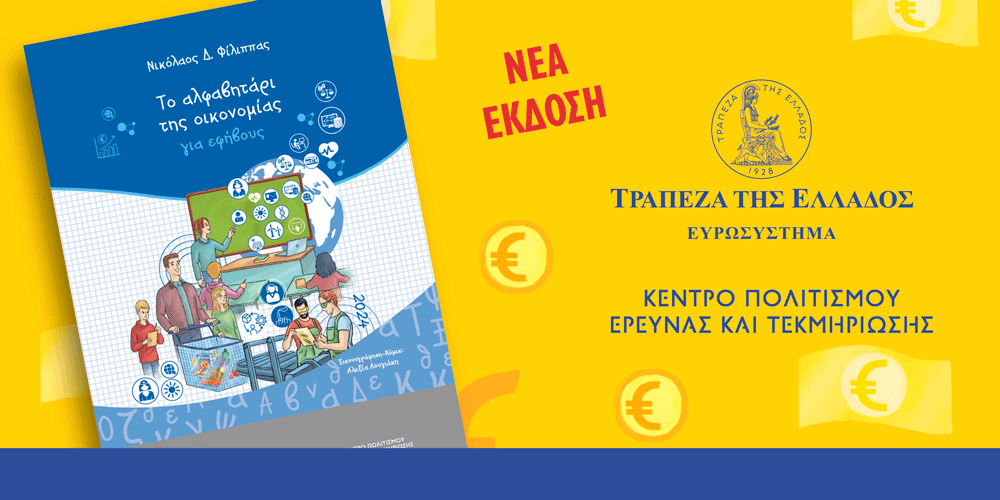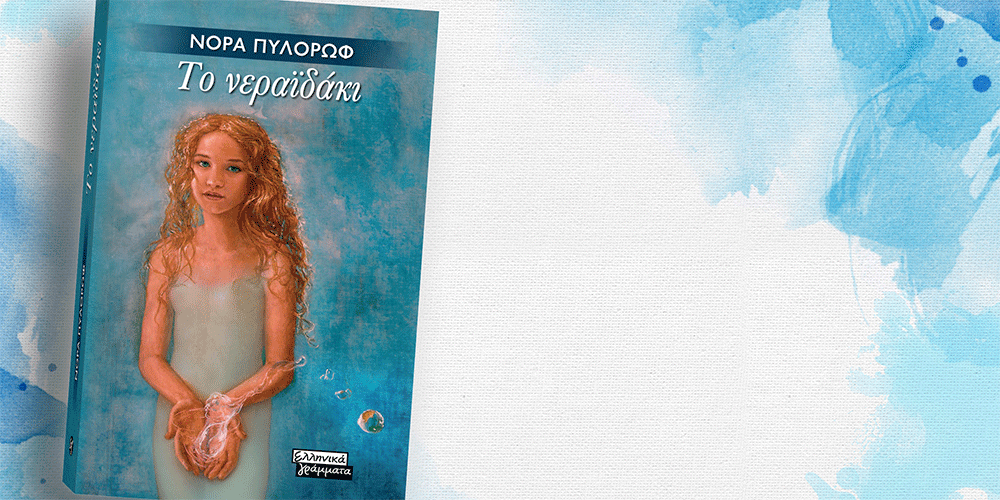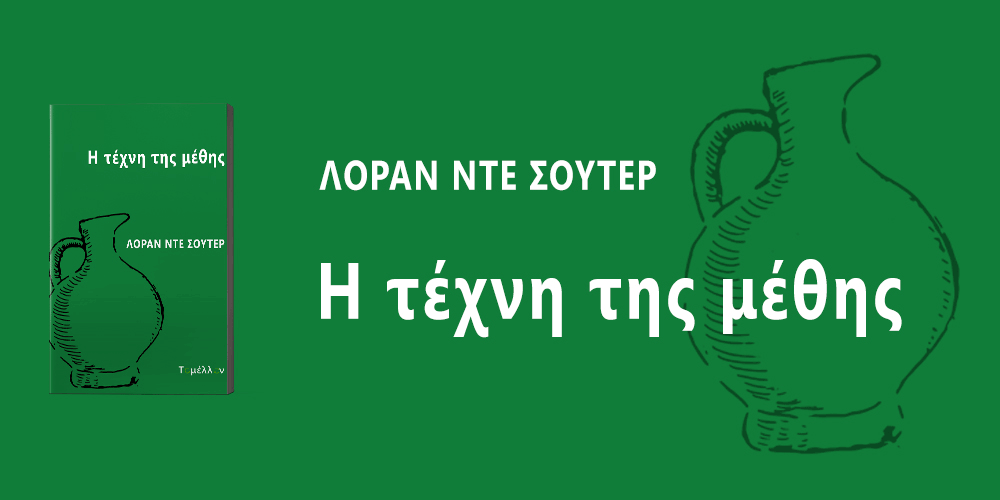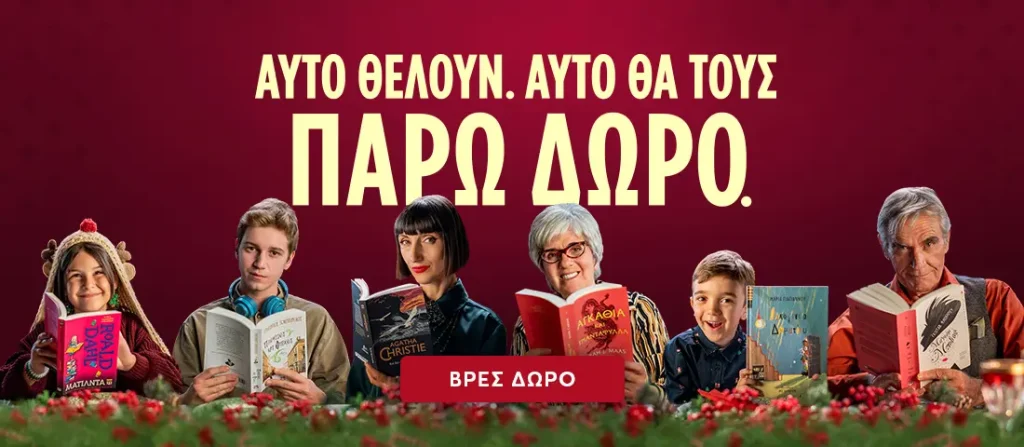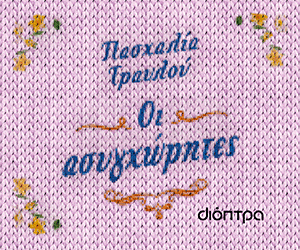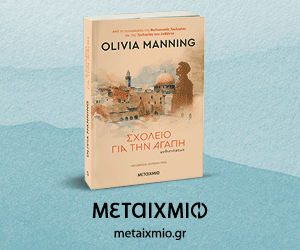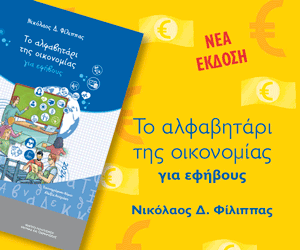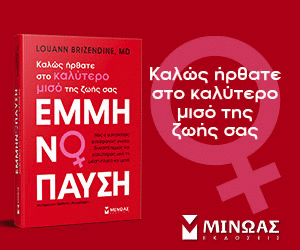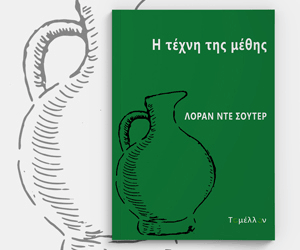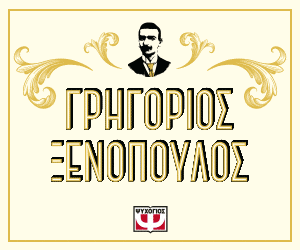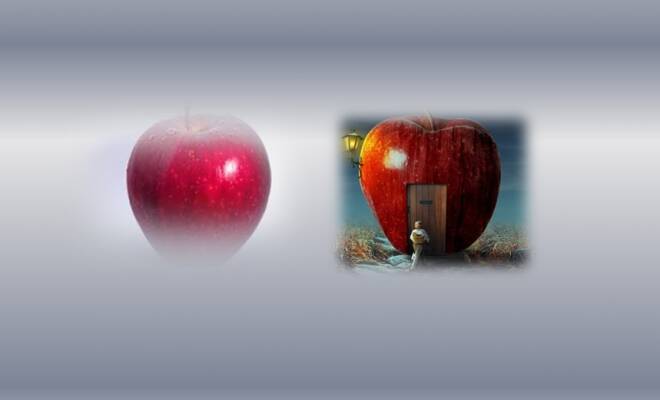
***Απαγορεύεται από το δίκαιο της Πνευμ. Ιδιοκτησίας η καθ΄οιονδήποτε τρόπο παράνομη χρήση/ιδιοποίηση του παρόντος, με βαρύτατες αστικές και ποινικές κυρώσεις για τον παραβάτη***


E. Apter, in the beginning of her book Fantasy literature : an approach to reality, makes a provocative statement: “The aim and purpose of fantasy in literature are not necessarily different from those of the most exacting realism” (1982, p. 1).
Before analysing those aims, a definition of what we mean by fantasy must first be clarified. Todorov (1975, p. 25) believes fantasy’s importance lies in its juxtaposition with reality, and this is what they use to classify it into a category or genre. Armitt (1996, p. 3) as well as Hume classify fantasy not as an isolated genre but as an impulse that is present in almost all literary works, just like the realistic impulse. Jackson claims their relationship is “parasitical or symbiotic” (1981, p. 20).
In the context of this essay, we shall characterise as fantasy “any departure from consensus reality” (Hume, 1984, p. 21) which is consistent with how Apter uses it (1982, p. 111). We should also note that if the aim of fantasy is included in the definition, this is deceptive and counter-productive in the context of this essay, which explores the commonality of aims between fantasy and realism. For example, in their respective definitions (Hume, 1984, p. 17): “Todorov emphasises hesitation, Tolkien joy, … Irwin game, Jackson … subversion and … dealing with [the]… repressed and … inexpressible.”
For further clarification, fantasy is different to escapism. The latter is only one of the possible aims of deviation from realism, and is often used in a derogatory way. For example, Kafka’s Metamorphosis is certainly fantasy, but no one reads it to escape from reality.
Moreover, escapist realism can have the same aims as escapist fantasy. If escape is just the desire to gratify the audience’s need for a stimulating experience that is missing from their everyday life, positive or negative, this can be done with detective fiction, pornography, and realistic horror as well as fantasy. Whether the author remains “within the realm of the empirically possible, however unrealistic the action may be” (Hume, 1984, p.77) or wanders off to the fantasy realm, the filling of escape is the attempted result: passive stimulation and comforting delusions, freedom from concerns and constraints imposed by nature and society. Fantasy ‘escapism’ has a slight advantage in terms of boldness and power when compared with realistic ‘escapism’, since it doesn’t need to play down to any of our prejudices or materialistic assumptions. It doesn’t necessarily need verisimilitude and has the added benefit to possibly emphasize the artifice of its world (Lindstorm, 1990, p. 8) (Hume, 1984, p. 82). The purpose of escaping dull reality is the same between fantasy and realism, but fantasy offers more effective means.
After all, the impulse of an author is always poetic, not mimetic. A writer never wishes to imitate only, but to create and to express, because they are pregnant with a concept, an idea or a vision, and have the natural desire to communicate. If we suppose that art imitates life, it would put art in a position inferior to life and mimesis as a disadvantage, at least according to Plato. In contrast, Plato uses intellectual myth visualizations (Hume, 1984, p. 6) not as mere mimetic descriptions of reality but a transcendental meta-reality. An augmented version of what is, transforming it into what could be or even what could not be. In short, an additive fantasy. Little clarifies the subject of creative license (1984, pp. 9-10):
“All writers of creative fiction are subcreators of Secondary Worlds. The Secondary World of a non-fantastic writer will be as close to the Primary World as his talents and the needs of his art will allow. … A licence is granted to writers of ‘normal’ creative fiction to change the Primary World for the purpose of their art. Fantasy begins when an author’s Secondary World goes beyond that licence and becomes ‘other’.” (Also see: Tolkien, 1964)
Therefore, both realism and fantasy fulfil the natural creative tendency of the writer. The critical lens of fantasy is useful only when there is a significant amount of departure from accepted reality, either by adding fantasy elements or removing rational elements. In contrast, rationality and realism, whose imaginative elements are minimal, receives more critical attention than fantasy. Realism’s privileged position in literature has only been overturned in the past few decades, in terms of popularity with audiences. It has its roots in skepticism and the prevalence of scientific thought, which is a product of recent history (Hume, 1984, p. 37):
“This scientific model of literature rests on several axioms. One is that observation can add to the sum of our knowledge. Another is that such data and such knowledge is desirable. Another urges the propriety of the author’s being objective and withdrawn … In its most crudely scientific formulation, the novel is a social experiment; the author sets up a situation and lets his characters develop logically, and we watch their responses.”
However, there are problems which are solely associated with the self-restriction of the realistic, mimetic framework (Hume, 1984, pp. 41-43). Namely, the limited and local sense of meaning it provides, because the focus on increasingly limited human experience decreases the sense of connectivity with the universe. After all, fictional literature is a lie, in the sense that it is not factual, but still there is truth in fiction. Another way to phrase this is that literature doesn’t draw its meaning from facticity. If the realistic structures become empty of meaning, resorting to an even older means seems inevitable. “Writers can still limit their art to the mimetic; … But many modern writers have found the realm of material reality insufficient”, (Hume 1984, p.196) which leads them to using the complex imaginative power of fantasy.
We could see all literature as placed somewhat within a spectrum with two sides, realism and fantasy, representing different attitudes towards nature. Brooke-Rose (1981, p. 81) confirms that “there is a realistic basis in all fantastic narrative, and even a fairy-tale will have some point of anchorage in the real, since the unreal can only seem so as against the real”. Great literature, even far from the fantasy pole, reinvents reality and does not merely present it, which would be utterly uninteresting.
Since we are viewing fantasy and realism as two opposing but complementary impulses, we can see why a mix with a certain balanced is pursued or achieved depending on the state of the world, the author, the work itself, and the audience. The aim at meaning is never dropped, as it serves both the author and the reader. It is common to all literature, fantasy or realist, but with different versions. In On Fairy Stories Tolkien argues that sub-creation (fantasy) has three faces (1964, p. 26): “the Mystical towards the supernatural; the Magical towards nature and the Mirror of scorn and pity towards man.” Because of its proximity to both myth and realism, fantasy explores all three of those aspects, which we can name: the mystical, supernatural, myth aspect, the natural, literal, realistic aspect (which is overturned by using fantasy) and the psychological aspect. Roughly those modes of thought are built into a structure of fantasy to cause the reader to think or sense the nature of existence. (Moorcock, et al., 1985, pp. 9-10). This would analyse meaning into three parts or identify three paths to achieve it.
Fantasy and realism are both in pursuit of meaning. Realist fiction, which is thematically adjacent to science, has certain positives in its ways to provide meaning: it can satisfy with novelty through an original way of seeing. It could provoke our reaction of validating our predictions or observations of patterns. It could please in aesthetic perfection and craft. It could grant moral satisfaction through discerning the right path of action. However, none of those aims are unique to realism, as this essay hopefully demonstrates, but they have different prominence: realism places novelty and originality as the centre of all goals, while fantasy used to primarily elevate timeless patterns, being closer to myth. Readers of myths don’t wish to see those patterns changed, only repeated in various instantiations with modest adaptation.
Myths as the basis of traditional literature were displaced from prominence with modernity (Hume, 1984, p. 33): “We find fantasy upholding morality … serving satiric ends … in allegory. What we do not find until the culture’s myths have been seriously challenged is fantasy used to denigrate the ideal, satire without a high moral norm, black comedy, and the like.” We can easily identify caustic satire, black comedy, political and social polemic books in the most exacting realist vein, in both fiction and non-fiction. In recent literature, we can also find their fantasy equivalents, which are innovating on the prevalent myths.
In Pig Tales (Darrieussecq, 2003) we do see the dismantling of certain traditional bourgois ethics that are supposedly human and lead into a sort of apocalyptic degeneration, contrasted perhaps with animal ethics, as seen through the eyes of the narrator that is turning into a sow. It is a denigration of an ideal of humanity, represented by Honoré, perhaps in favour of a more naturalistic viewpoint, as radical religious and political ideals are also ridiculed.
The capitalist ideal is criticised as well, sometimes in a dry-humorous way, in the Metamorphosis (Kafka, 2005), where the Samsa family seems to be acting logically in terms of the capitalistic ideas and a Calvinist work ethic in pursuit of honest labour and assumption of responsibilities to take care of their loved ones. However through the fantasy tool of transformation that is employed, their actions are completely illogical and absurd.
In Master and Margarita (Bulgakov, 1967) humour and satire are used much more extensively, as well as fantasy elements and black comedy. The chaos, mayhem and death that result from the activiries of Woland’s crew can be read comedically and contrast with the prevalent Ethos in Soviet Moscow. Censorship, infantilization, adherence to an immoral, nihilistic and dishonest way of life are also contrasted with the story of Yeshua and Pontius Pilate. Yeshua represents a different mode of being, specifically speaking the truth at all costs, and Pilate represents fearful complacency. This coincides with the biblical Jesus, and Pilate is a figure that is in the same place as the people of Moscow during the plot (Haber & Bulgakov, 1975, p. 387): “the Muscovites, and especially the conformist writers and theatrical people who are the main butt of his satire, have already succumbed to the double lure of material comfort and the atheistic dogma of Marxism-Leninism.”
Both Yeshua, in his timeline, and Woland, in Bulgakov’s own timeline, serve as agents of bringing down an oppressive status quo through different means, which is supported with lies and individual cowardice in face of the ruling system. (Haber & Bulgakov, 1975, pp. 402-404). In fact, “we are not allowed to forget the Pilate chapters while we read the others.” (Wright, 1973, p. 1170) The Pontius Pilate – Yeshua narrative is related to the readers by three different characters in chapter ii, xvi, xxv and xxvi, paralleled with the same sort of behaviour, as many Muscovites refuse to accept their conception of reality is flawed, like Berlioz when facing of Woland.
In all three of the aforementioned books, we see fantasy being employed with the same aims as those of realism. One could describe the horrors of Soviet gulags, anti-Semitic Nazi Germany, or horror stories stemming from Misogyny or Western Capitalism in all gruesome detail, but the effect would be very different. In fact, the fantasy elements serve to reduce the tension in such stories, where otherwise blunt reality would be too painful.
Fantasy stories employ several methods of dislocation from reality, in their attempt to convey psychological and mythic of meaning. This is obviously done at the expense of rational meaning, because fantasy doesn’t claim to be factual in a literal sense. The most popular among those methods is substitution (Hume, 1984, p. 166). The substitute can take many forms. It can be an object, activity or transformation that is a more effectual, powerful replacement to the mundane one. The fantasy imagery, evoked by the fantasy author, is created in the audience’s mind, which makes it more potent than a plain description of a realistic event.
We can list numerous examples: Gregor Samsa’s Metamorphosis (Kafka, 2005), the sow transformation in Pig Tales (Darrieussecq, 2003), the conscience swaps in Cortázar’s (1985) Axolotl and Distances, the protagonist vomiting bunnies in A Letter to a Young Lady in Paris and more. The replacements can express an inexpressible, dormant or latent psychological meaning. It would be desireable to reveal those in realism, however this can only be done indirectly due to realistic restrictions. Fantasy is much more free to express them, which is why it has been linked with dreams:
“Often [fantasy] shares the dream-like combination of vividness and vagueness. … it exhibits those characteristics Freud listed as the special features of the unconscious processes and which emerge in dreams: exemption from mutual contradiction, timelessness, replacement of external by internal reality, and a tendency for emotions suddenly to change both their character and their objects. The language of the dream is commonly pictorial, … but sometimes the dream’s primitive language is to be interpreted literally, sometimes figuratively, and the dream itself never indicates which interpretation is valid. As in fantasy, we are neither in the world of concrete images nor of abstractions, but a middle ground in which literal language has an unreliable and unruly figurative tendency.” (Apter, 1982, pp. 130-132)
Exemption from contradiction is also a function of myth, which provides a solution to logical problems, in origin myths for example. (Csapo, 2005, p. 226). The same goes for timelessness (Sandor, 1991, p. 347) and the rest of unconscious processes mentioned, as myths have been extensively analysed under a psychoanalytical framework, by Freud and especially by Jung, who separates personal from collective unconscious, one stemming from individual desires and the other from general ones. (Apter, 1982, p. 141). Therefore, dreams and myths are similar, varying in broadness of experience, the former being personal and the latter shared.
“Myth, … gains meaning from being part of a system, and in this characteristic it has advantages over many modern adventures. Monsters like the gorgons in the Perseus story have an ancestry that links them to a … genealogy … western dragons share family resemblances which give them predictable powers … Such transpersonal significance for fantastic monsters is often lacking in contemporary popular literature. Thus two fantastic monsters, one known and the other unfamiliar, may serve the same function within the story yet have differing effects in the imagination. … Daydream material not subordinated to a mythic universe is crude stuff in its egocentricity.” (Hume, 1984, p. 67)
As a fantasy text, The Master and Margarita certainly incorporates the former idea of attaching it to a mythic structure. Bulgakov uses religious texts, folk tales, and Goethe’s Faust. Whatever the audience knows about those gives them knowledge over those characters, and environments together with expectations. We know what the Devil’s or Christ’s or Pilate’s motives are, for example, as we know a witch’s or a vampire’s abilities. We are offered many connections with Faust, between Margarita, the Master and Koroviev, with Faust, Woland with Mephistopheles, as well as biblical connections between Woland and the devil, both the Master and Woland with Christ and so on (Haber & Bulgakov, 1975, pp. 383-384). These are not forced, but clearly thought out by Bulgakov, proven for example by Behemoth, Azazel, Abbaddon and Hella. they all have names and traits derived from other sources, such as the bible, apocryphal books, gnostic ideas, English morality plays and mythology (Wright, 1973, pp. 1166-8).
Sometimes those references create expectations just to overturn them, thus aiming to offer the novelty that is so treasured to realism. Through the subversion of certain aspects of those mythic universes, they are expanded upon and renewed. In any case, whether the references are there to be enforced or subverted, they make a stronger impact due to their associations. The most significant example of diverting from the established norm is probably Yeshua, who is presented as a sole enlightened man without significant following or divine claims, whose words are twisted by Matthew the Levite and gradually distorted through time. Another example is when the devil grants a favour to Margarita with no expectation of reciprocity, towards Frieda and Pilate, or when Margarita is the important part of the pact with the devil rather than The Master, while Gretchen in Faust doesn’t have a similar role at all. The devil is also presented differently, almost as an unintended liberator that brings a fruitful chaos to Soviet Moscow. While Woland is associated with the night’s moon, as compatible with traditional symbolism, the light of the sun is neither a symbol of the good nor connected with the Yeshua character. Instead the sun is a symbol of oppression, “allied to the harshness of absolute authority against which both Christ and Satan struggle”. (Haber & Bulgakov, 1975, pp. 403-404) Through those subversions of tropes, new imagery and associations are created, serving one of the main goals that realism shares.
In short, fantasy can include the story to a larger mythical network of stories, creating intertextual references, which is also done with realism, through a network of empirical knowledge. The aim of subordination to a broader universe could be compared with placing a realist text within a broader corpus of literature. Serialization, historical fiction and scientific literature would be examples where the realist author attempts to use evoking concepts and images familiar to the audience. As examples of these quick ways of unpacking a lot of information, we could offer Sherlock Holmes, Alexander the Great, or the disease of cancer. To summarise, the author in both fantasy and realism can utilise the audience’s potential familiarity with other subjects and texts by placing narrative within a context.
Exploration of the inner human world is another field where fantasy can be more effective than realism by dispensing with logic, as hinted with the dream parallels. Since the establishment of psychoanalytic theory by Freud, Jung, Gestalt theory and others, various psychoanalytical frameworks have been proposed as methods of reading fantasy. We should note that those readings tend to kill the richness of the story if they are forced, reductively, into a narrative. (Apter, 1982, pp. 79, 130-131) (Cornwell, 1990, p. 212). Even though it is insufficient as a sole interpretation, psychoanalysis does have connections with fantasy and can enrich the experience of writing and reading it, if it is not radical and exclusive.
Psychoanalysis is particularly helpful on interpreting the fantasy theme of transformation as it offers the explanation of the divided or double self (Apter, 1982, p. 48) and doubts about identity (p. 76). The realist has no proper methods of expressing those as explicitly. This transformation may also express desire, which turns man into beast after the wanted object is lost. It may signify social pressure and labelling, that makes a person conform to their label. It may mean punishment, guilt or embarrassment and more, but in short inner conflicts. The psychological message is that there is a good and an evil part of the self which is also expressed in mythology with the ‘hostile brothers’ archetype, Thor and Loki or Set and Osiris being prominent examples. In fantasy, it is not only expressed in two different characters but as a supernatural transformation in one character. The transformation is a psychological, mythical and moral symbol as well as a narrative device, providing rich meaning. Realist texts do attempt to unfold the psychology of their characters, but it is hard to condense this multitude of messages if restricted by rational-scientific frameworks, because such things as sudden transformations cannot occur in them.
Doubting the character’s own (or others’) identity is visible through many texts having to do with visible transformations. We see Margarita relishing in her powers after her transformation into a witch, wishing to remain like this in the end of Bulgakov’s plot. The narrator in the end of Pig Tales starts to embrace her transformation into a sow once she meets the werewolf and gets a bit of control over it once she starts synchronizing with the moon. Gregor momentarily feels free when he embraces his new non-human nature, climbing over walls, exploring his new body. Transformations also result in the person being naked, laying their true nature bare, visible to others.
In Metamorphosis, when Gregor turns into a bug-like creature, his situation and social environment are revealed. The change, in its radical suddenness and especially in its obvious visibility, serves as a catalyst for the whole plot to unfold. In a realist plot, it would be much harder to communicate the same character traits and societal problems, like the predatory dependence of his family and his employers upon him. They had already been treating him like vermin, even before he is transformed. He is nothing but a beast of burden only, and arouses disgust as soon as he is not suitable for his providing role. When seen in his new form, he is instantly recognized as Gregor. His family is not fearful, but ashamed, and he causes an inconvenience, but not terrible emotional pain. Furthermore, Gregor was just as powerless before his metamorphosis as he was after. He can neither explain it nor stop it. In general, he is disoriented, with a lack of self-knowledge and agency, like the narrator in Pig Tales seems to be.
Summarizing, the metamorphoses are partly examples of an external dramatization of a normally internal event (Apter, 1982, pp. 79-80) (Moorcock, et al., 1985, p. 8). Kafka could make a wholly realist plot, where the audience could witness the Samsa family’s actions, and dialogue, and through that try to interpret their character developments and transformations or their societal norms, or draw any other conclusions for the nature of reality. Instead he is deploying the fantasy transformation, where readers are also left to interpret the image of this bug or vermin, why it was used, how does Gregor’s environment react to it.
To conclude, the overarching aims of realism and fantasy are often the same, no matter which plot devices are employed. Meaning attached to rationality is better related through realism, but mythical, moral, emotional, or psychological meaning is sometimes better served by fantasy, because of its ambiguity and multitude of symbolisms. As Kathryn Hume states (1984, p. 191): “Like dream images, they can condense several problems or ideas. They distance and depersonalize … their ability to resonate with the different emotional needs in the members of the audience, gives fantasy a power and effectiveness that are different from anything achievable by mimesis alone.”
Apostolos Υiannaras is an architect, writer and designer who deals with fantasy literature and fantasy space. He grew up in Piraeus where he lives, but he has also lived in Portugal and Scotland. He graduated from the School of Architecture of the National Technical University of Athens in 2014 and graduated from the Interdisciplinary Creative Practices School of the University of Edinburgh in 2017. Since his early age he has been occupied with fantasy and strategy game roles, art and philosophy. He searches for the point where fiction, logic and emotion come together.

Ακολουθήστε τo Literature.gr στο Google News και μάθετε πρώτοι όλα τα νέα για τον πολιτισμό και την επικαιρότητα από την Ελλάδα και τον Κόσμο.

